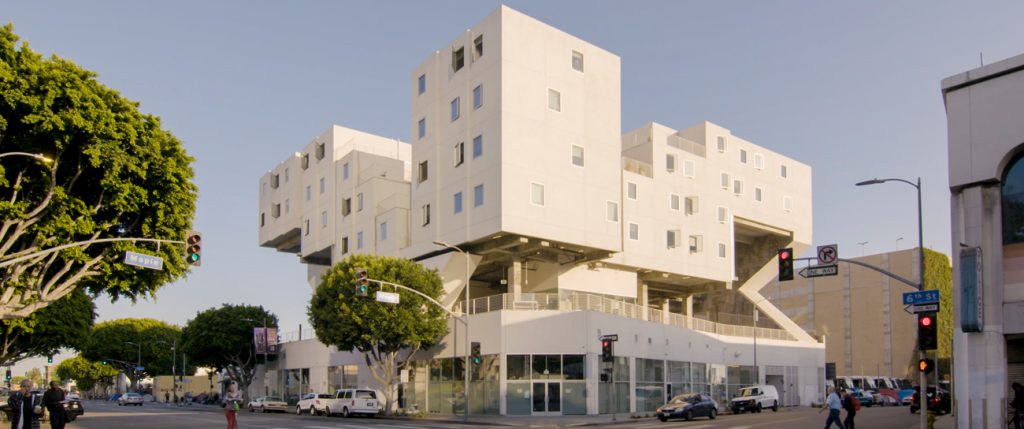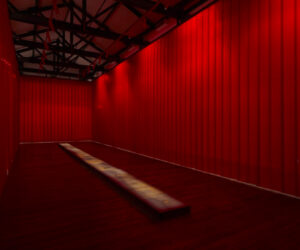Canadian Centre for Architecture documentary weighs architectural responses to homelessness
What does it mean to live without a reliable home? And when homelessness has become an intractable urban reality, how might architects understand and address it?
What It Takes to Make a Home, a documentary short film by the Canadian Centre for Architecture (CCA) screening in cities worldwide in fall 2019 and winter 2020, considers these questions carefully – casting new light on the ways architecture enters the wider social, economic, and political contexts reshaping urban life today.
Rather than survey attempts at architectural solutions to homelessness and housing insecurity, the documentary presents the attitudes of two architects whose work directly engages these issues: Michael Maltzan, based in Los Angeles, whose observation above appears in the film’s opening sequence; and Alexander Hagner, based in Vienna, a city with a traditionally strong social housing system currently tested by changes in its population.
The film interweaves a conversation between Hagner and Maltzan with the perspectives of individuals affected by homelessness, who are given space to convey their everyday challenges and larger experiences. “At its core, this documentary is about really hearing from the people who have experienced – and who are experiencing – homelessness firsthand,” says CCA Director Giovanna Borasi, who conceived the project. The film was directed by Daniel Schwartz, a filmmaker based in Atlanta and Zurich.
In pairing the two cities, the documentary begins to unpack the complexities of the problem: homelessness takes both familiar and unexpected forms, demanding responses that take into account not only human spatial requirements but also emotional needs. While pointing to the lack of affordable housing globally, the film asks what role architecture can have in destigmatising the experience of housing insecurity and establishing what a home might be.
For Hagner, creating architecture for only a particular segment of society emphasises difference and reinforces stigmatisation. His VinziRast-mittendrin housing project in Vienna intentionally blends into the urban fabric; it is exceptional because it provides a prototype for a new form of community, where students and individuals formerly without homes live together. “Although architects will not be able to solve the complex reality of homelessness, they can help to frame life on different scales, supporting communities as well as individuals,” Hagner explains.
Maltzan, on the other hand, believes that distinctive architecture has the capacity to bring value to spaces designed for vulnerable individuals. Star Apartments, a mixed-use complex featured in the film that provides 102 apartments for inhabitants who previously did not have dependable shelter, is one of several projects he has realised with Los Angeles’s Skid Row Housing Trust. For Maltzan, developing multiple models of signature housing over time can draw needed attention, pushing cities to face housing insecurity more productively.
Though the architects’ ways of thinking and working contrast, their examples – along with the stories of those who have been directly affected by homelessness – suggest the possibilities and limitations of architecture in creating inclusive cities. Importantly, both Maltzan and Hagner search for long-term strategies for housing rather than propose ad hoc solutions. In this sense, the film contrasts the specific, material work that architects can do against conditions that architecture alone cannot possibly fix.
What It Takes to Make a Home is the first documentary film in a three-part CCA exploration of intersecting conditions – loneliness, migration, segregation, and ageing, among others – that are reconfiguring cities in the 21st century. The second and third films of the series will continue examining the ways in which changing societies, new economic pressures, and increasing population density have begun to reshape collective life in multiple contexts worldwide.
The film also inaugurates a next phase in the CCA’s digital storytelling efforts, which engage new media formats and reach additional audiences in order to shift conversations around fundamental social issues in our contemporary world. Documentary film in particular has begun to play a key role as a curatorial tool for the institution, figuring in initiatives such as Misleading Innocence: Tracing What a Bridge Can Do (2016), a film conceived by Francesco Garutti and directed by Shahab Mihandoust that explored the rumours of racist intent in bridges designed by Robert Moses; The University Is Now on Air: Broadcasting Modern Architecture (2017), an exhibition, publication, and multimedia project focused on an architecture course offered by the Open University in the 1970s; and Our Happy Life: Architecture and Well-Being in the Age of Emotional Capitalism (2019), a project that explored the pervasive effects of a global “Happiness Agenda” pursued since the 2008 crash through formats including Now, Please Think About Yesterday, a documentary about Gallup’s World Poll.
What It Takes to Make a Home premiered in fall 2019 at the Architecture and Design Film Festival in New York City, Vancouver, and Toronto; screenings will be held throughout winter and spring 2020 and include:
- 18.02: NYC, United Nations – 58th Session of the Commission for Social Development
- 06.03: Budapest, Budapest Architecture Film Days
- 14.03: Melbourne, Melbourne Design Week, as part of the MDW Film Festival
- 22.03: Montreal, International Festival of Films on Art (FIFA)
- 28-29.03: Washington, DC, Architecture & Design Film Festival
Visit cca.qc.ca/tomakeahome for updated listings



